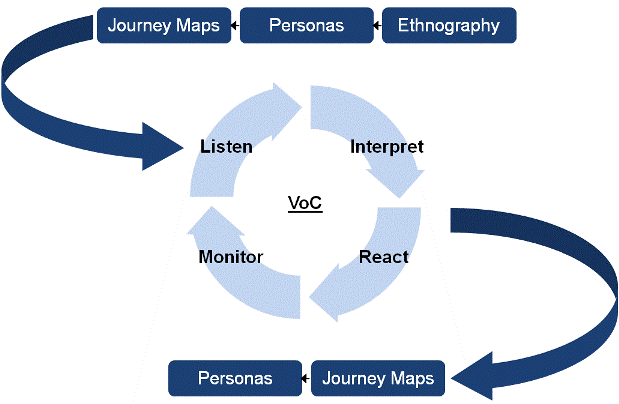Voice Of The Customer Programs Need Better Understanding, Not Just Better Analytics
Voice of the customer (VoC) leaders are constantly on the hunt for better analytics to identify what customers are saying and doing and, in turn, where companies should focus their attention. For the most part, the hunt is worthwhile. Just think about the value that text mining has delivered during the past few years. However, this focus becomes a problem when it turns into tunnel vision, leading VoC pros to ignore other research tools that yield deep customer understanding.
Analytics based on customer feedback and interaction data can determine important things like which known experience attributes drive customer loyalty and where customers encounter problems, and these insights can lead to a variety of operational improvements. But big changes require deeper understanding. As we were all reminded recently, customers didn’t tell Steve Jobs to build an iPod, nor did any sophisticated analytics.
Fortunately, other customer understanding tools are well suited to fill gaps in traditional VoC activities. Qualitative research methods like ethnography and related tools like personas and customer journey maps dig into what customers really need on both emotional and functional levels. As a result, they can help VoC leaders figure out:
- What to look for in feedback and interaction data. On the front end of VoC efforts, personas and journey maps can help identify the things that really matter to customers. VoC leaders can then ask about and look for those things in customer feedback and interaction data, leading to more relevant insights.
- What to do based on the findings. On the back end of VoC efforts, these tools can help firms figure out what they should do in response to issues or trends identified through analytics, leading to more valuable solutions.
The relationship here is also mutually beneficial. VoC efforts can feed into other customer understanding tools to keep them fresh over time.
So why don’t most companies embrace this virtuous cycle by bringing their customer understanding tools together (see below)? I suspect it’s just a historical thing — VoC always sat in one place; design personas and journey maps always sat in another. As companies try to really rally around customers, that will need to change.
What do you think? Should firms bring these tools together? Are any companies doing it well?
